[Katie Schumacher, Wisconsin Historical Society]
Today, we are pleased to introduce Ann Lewis as part of the Wisconsin Historical Museum’s History Sandwiched In lecture series. The opinions expressed today are those of the presenter and are not necessarily those of the Wisconsin Historical Society or the museum’s employees.
Ann Lewis grew up in Duluth, Minnesota, where she lived from 1944 to 1967. She graduated from the University of Minnesota Duluth and then taught English at Duluth East High School, her alma mater. Since 1972 she has lived with her family in St. Paul, Minnesota, making periodic pilgrimages back home to Lake Superior. She has privately published a book of poems and sailing stories called My Duluth, now out of print. Her most recent book, Ship Captain’s Daughter, was recently published by the Wisconsin Historical Society Press. Here today to discuss growing up as the daughter of a ship captain on the Great Lakes. Please join me in welcoming Ann Lewis.
[applause]
[Ann Lewis, Author, Ship Captains Daughter]
Well, I think I have to do a little explaining on why I am here in Wisconsin with the Wisconsin Historical Society. I did grow up in Duluth. If anybody has been to Duluth, you know that they’re really twin ports. Superior is right across the bay where my father grew up, and his people are from southern Wisconsin, from Fond du Lac and Plymouth. So, I have to give my credentials in order [laughs] to be a Wisconsin spokesperson.
I’m so glad to see you here because there is nothing more fun than being with people who share your interests, and mine is certainly in preserving mariners history. I also would like to thank the University of Wisconsin Historical Society, or the Wisconsin Historical Society, for being interested in sharing and preserving stories like mine and my family’s. I think it’s a – a wonderful – it’s been a marvelous experience to work with them, and their focus on valuing people, not only facts and figures, like how long ships are and how many tons they carry, but about the people who work on those ships. And that certainly applies to me and my family. So, I’m excited for us to do some sailing together today.
We’re going to start with looking at the map –
[slide featuring a map of the Great Lakes]
– because I found, even for myself, though I grew up in this life and I did sail these lakes, that when I came to write about them, I wasn’t quite sure of all the – all the details. So, I’d like us to look at this first. I’d like to point this out –
[uses mouse pointer to point to the Sault St. Marie locks between Lake Superior and Lake Huron]
– as the pivotal piece in the entire enterprise, in the shipping enterprise. Without the Sault Locks, nothing really would have been happening in this industry. And a tiny, tiny bit of history is that iron ore was discovered in about 1840, and it was first transported by horse and cart, by hand, shoveled in there and put in. Someone here said that their grandfather actually worked on schooner. So, discovered here –
[uses mouse pointer to indicate the Upper Peninsula of Michigan]
– and put on schooners here –
[uses mouse pointer to indicate Lake Superior]
– unloaded and carted around the Sault, and then put again on a ship, and, essentially, this is what happens, and it happens in the cycle of shipping today and in my life. You come through the – these locks, which connects the whole industry, and down, essentially, you turn left to go down through Lake Huron, Lake St. Clair, here’s Detroit, the Ports of Sandusky, Toledo, Cleveland, and the – the last port in this run would be Buffalo. That’s like six-and-a-half days. Or you come down through the St. Marys River –
[uses mouse pointer to indicate the St. Marys River which is south of Sault St. Marie and runs south through the Upper Peninsula of Michigan from Sault St. Marie into Lake Michigan]
– which takes seven hours, and you turn right, and now we’re into Wisconsin interest territory. You come down into Sturgeon Bay or Manitowoc, Milwaukee, down to Chicago, which was a very steady run of my father’s. So that’s to give you a sense of what our life was like. Like, how do you live this life?
[Ann Lewis, on-camera]
We – I say we’re people of the lake, particularly before technology, when icebreakers and so on can extend the season to, like, mid-January now. When the lake thawed, my father left, and when it froze, he came home. That meant March into December. And in this time period, there was no time off for vacations, which, of course, there are today, or they wouldn’t get people to do this life.
I think it’s important in the historic sense to realize that this was also during the Depression, and that people would probably do jobs then that they wouldn’t do today. So, one was happy to have a job. Also, they were in the Merchant Marine, which spared them from going, like, overseas in the war. So, it’s not like they were captive, but I think it’s important to understand those historical factors. So, essentially, he was gone March until December, but there were little perks in between. One of them was a steel strike. That was fabulous. [laughs]
[laughter]
Not for the nation but for shipping families. One of them we went to Sandusky, Ohio, where he was marooned, and we spent two weeks aboard ship with my dad there. And that’s where I learned how to swim. We went to Catawba Island, and we took sandwiches from the ship. I mean, heaven forbid, we should have a hot dog, but we would have, like, pork sandwiches. But I remember it as a marvelous golden time. So, those were kind of the serendipitous moments that you – you maximized for sure. Otherwise, my father was home every five-and-a-half or six-and-a-half days.
Now, home didn’t actually always mean home because before he was a ship captain, which happened when I was almost nine, he was a first mate. And the first mate’s job is really, one could say, one of the worst on the ship because he is responsible for the load. And if the load isn’t right, the ship doesn’t ride right. If there’s a bulge in the middle, that’s not a good thing. If there is – if it’s unbalanced, it’ll roll. So, it’s his primary responsibility but, also, there are second and third mates who are learning the job and can be very capable. So, to come home might mean that he would leave the ship for an hour or two. The other thing to consider is that this is – time is money in this industry. One doesn’t stop. So, you might get in at 2:00 in the morning, 4:00 in the morning, 12:00 noon. You know, its just – it’s a life of constant motion. In that sense, time sense, and in physical sense, if you’re aboard ship, you’re always moving. It’s like being on a ride, you know, at the fair. In olden days, people used to go for rides in their cars, you know, on Sunday just to ride. So, you are always in motion, time-wise and physically, if you want to get, you know, a real feel for this life.
So, I begin the book by saying this could really be the beginning and the end. The ship come in, and the ship goes out. That’s really the essence of the entire enterprise. But in between, we lived our life. It came in and out every week, every year, and all the sudden that’s become your life. So, I begin by saying, The ship comes in, the ship goes out. And as the daughter of a Great Lakes ship captain, I grew up to the rhythm of the transport of iron ore. So, you can see how there is a rhythm. From the arrival of the shipping orders in March to ‘lay-up’ in December, from climbing the ship’s ladder weekly to see my father while he was in port to watching his ship disappear again over the horizon line, my life was dominated by the excitement, the loneliness, the drama, and the lure of the shipping industry on the water.
I want to talk to you a little bit about the lure because as I got older and I realized the rigors of this life, as well as the perks, I thought, Why would a person do this life, if you – once you really know what it’s like? And I’m sure many of you have had a dream, and then some of you have realized it, some maybe not, and was it what you expected in the end? That was a question that kind of haunted me as I took up writing of this book.
So, I’d like to introduce now the pull of the water. I think that’s a fascinating thing. I mean, there’s a – theres a piece of this where it’s a job, and then there’s a piece of it where it’s a profession and I’d like to confess to you that I always kind of fought the stereotype of the sailor, the big, brawny, bar-hopping sailor. And I like to use the word mariner. [laughs] It seems to elevate the profession, which indeed it is. And there is a difference between crew and officers. The officers have to get many licenses. They have to learn math. They have to learn how to find longitude, latitude, do – excuse me – radar, know every shoal, all the currents, how to predict weather. Today in the academies, they teach a course called Earth Processes, which I think is really interesting. So, I’d – Id like to, you know, part of my mission is to sort of underscore that as well.
So, I’d like to quote my dad. In his retirement article, he said, We left port that evening.”
[slide featuring a photo of Ann Lewiss young daughter on shore waving to a ship which is docked at a pier in Duluth, Minnesota – shot from behind her. This photo is also the cover photo for her book.]
And he was 16. He went aboard ship as many young men in our area, to make some summer money. And also, at the urging of his father who had started work on the Soo Line Railroad, he became a conductor at 16, and in his – his time, like 1920, he thought it was high time a young man start thinking about doing some work. So, he says, We left port that evening, and I was all over that ship. Everywhere. After I looked things over, I decided this is it for me. I was a porter then for a couple of months, but I kept bothering the mates –
[Ann Lewis, on-camera]
– for a decking job because I was afraid to talk to the captain. I especially kept after – after the chief mate, Mr. Victor Knoll. He said I was too young to work on the deck, but I kept bothering him so much that finally I was transferred to the deck department. As time marched on, I was determined that someday I was going to be in that pilot house, and I was going to run that ship.
So, that became his dream, and it became – we lived it out together because, as all of you know, when you choose a profession, you have a family or a partner, you’re in kind of that together. So, my father’s choice involved us, ultimately, as well. And we became a shipping family.
So, now I’d like to give a little more insight as to what our life was like. And the cover of the book was chosen – you know, when you do a book, as many of you, even your photo albums, you know if you have a cover, you think, Oh, is this the thing that tells it the best? And we kept playing around with them, and this, we decided, tells it the best. Or I had some – some input on that because, to me, this was in order of my father’s dream. This was the pinnacle of the dream come true, and I’ll tell you why.
This is the pier in Duluth, Minnesota.
[return to the slide with the photo that is the cover photo for her book, described above]
I might be a little prejudice, but I think it’s the grandest entry on the lakes. [laughs] Everybody has a canal. You get into the port from, you know, Manitowoc, whatever. But as you know, Duluth has that fabulous aerial bridge. You feel like Odysseus coming home from time and space. So, this represents the most perfect moment in the business. It means that if you’re the captain of that ship, you’ve put in years of seniority. Today, people go to maritime academies and come on as third mates. They work with simulators and so on. But in the olden days, a young man such as my father would come – come up through the hosepipe, meaning he would learn on the job. Start as the deckhand, move up, become a wheelsman, third mate –
[Ann Lewis, on-camera]
– so on, and eventually a captain, which was a huge thing.
So, it would mean that you’re at the top of your game. And, again, if we’re talking best case, we’re talking a weekend when there’s tourists who would line that canal and it would come maybe in the afternoon instead of at 2:00 in the morning. And I have to explain, this is like faux, like in French, me. Not me. It is my daughter watching her grandfather come in the pier, but it so represented my experience. And she’s looking out. So, this was the cover winner.
So, what would happen, in my experience, is that we would come down early, and we would stand and watch for the ship to break the horizon. And then it would seem like forever, and then all the sudden a little dot, and then it seemed like it didn’t get bigger, and then all the sudden it would. It would come closer and closer. And then when it came in the canal, it would seem to go fast. And then it would get bigger and bigger, and by the time it got, you know, to you, it would be tall. You know, three, four stories tall. And my mom would say, Look up! And we’d look up, and out would pop Dad with the big bull horn, and he’d say, Ahoy, mates! And we would say, Ahoy, Papa!
[laughter]
And he would say, Forty minutes to the dock! And – and in our geography, we could actually watch that happen. If you’ve been in Duluth, you can see them go in the bay. If you were going to a dock in – in – in Duluth, we could just follow that, and then we’d have to go to the dock.
[slide featuring a sepia toned photo of young deckhands in the early 20th century tying down a ship to the dock]
This is an old picture, and this is to do with history. These are the deckhands. They’re going to take a line off and – and tie it to – I call them spiles. I think they call them bollards. Bollards. Bollards. But I thought it was interesting, today of course they would have helmets on and life preservers. They don’t even have life preservers. And you can see the drop down to the dock. So, when you come in light, you have no cargo. Ballast water, to keep you, you know, from rolling, but – but the ship is very high when it comes in. So, they’re going to get –
[new slide featuring an old black and white photo of Ann on her fathers ship holding a large baby doll and sporting a captains cap]
that line off, and then here’s me.
So, this is the time [laughs] – this is the time period you’re talking about. And I – I want to tell you about one of the conditions of seeing my father, which I – I’m assuming has – did not apply to you, is that we would have to climb the ladder to see him. First of all, of course, we had to walk the dock. Somehow it seemed the ship always tied up at the very end. And the docks were always messy. I can’t think of one that wasn’t. Some get the prize. Ashland was always the worst, in case that’s important to you. [laughs] But they were always noisy because the oar trains would be overhead. They were made to load on either side, so the walkways were through the middle. There were surge holes that would bubble up sometimes. And when I got scared, when I was little, my mom would march and sing. And she’d say [mouthing the tune of Grand Old Flag]. And I would think, I’m still scared. [laughs]
[laughter]
So, we would get – first you’d see, you know, the beginning of the ship and then down and then you’d hear my Dad say, Hey, here come my girls. So, then we had to negotiate the ladder. When I was young, my Dad carried me up. And he held me in the curve of his left arm. And with his right, I think I know that by heart, he would grab and let go and grab and let go. [laughs] Put his foot on the rung, grab and let go. And in the middle, you would be detached.
[laughter]
And if you looked down, you could see that rusty, brown water and think, If I fell, there would be no way to save me. So, once I got up, I was always relieved, but I spent the whole time aboard thinking about getting back down.
[laughter]
The good thing about that is when the ship was loaded, it would be lower. So, it wasn’t quite the height, and yet, when it was lower, the – the ladder would get at sort of –
[Ann Lewis, on-camera]
– a strange angle. So, that was always – that was the up and down of this slide. Everybody in life has ups and downs, and this was literally the ups and the downs.
The other up was I can’t remember ever going aboard ship without going straight to the galley. And ships are famous for food because the best way to keep sailors happy is to keep them in cinnamon rolls and roast beef. There was always food in the galley because, of course, there are 24-hour watches, you know, everybody has two four-hour watches in a 24-hour period. So, people didn’t always eat at – at, you know, the designated time, so there always had to be food there, and it always was there aplenty. It always smelled like warm butter for some reason. That was always my sort of galley remem-remembrance. And there would be men in there, you know. Dock men with their hats and their gloves in their pockets. And it was always my favorite.
And then my Mom many times would go up – up to my Dad’s cabin, and I would stay on board – on deck and load with him and watch those huge spouts come down and pour ore into the hold. And my dad would yell up, It’s a two-car pocket! And would mean there would be two train cars worth of ore that could go into this particular hatch. So, that is one of my memories.
Here I think it’s fun to see. You have to think –
[slide featuring a black and white photo of Anns mother dressed in her Sunday Best standing on the deck of her husbands ship]
– about this life. The women would see their husbands, you know, on this sort of strange schedule, and they wanted to look good. So, here’s my Mom in heels and kind of spiffed up, and she would have to climb that ladder like that.
[laughter]
[new slide featuring a 1950s postcard titled Locking Through with four photos of her fathers ship going through the locks from various angles]
You know, then he would load the ship, obviously. And – and we would watch him pull out and be gone for another week, five-and-a-half or whatever days and go down through the Sault. Now, this is actually his ship. His last and favorite ship. He called it a humdinger of a ship.
[laughter]
And I think it’s fun to know, if you’re Googlers, you can Google up this ship, the Herbert C. Jackson, which is being redone in Superior, Wisconsin, as we speak. It is one of the smaller ships. Now it’s a smaller ship. It was almost 700 feet long. It’s going to be saved to go into the smaller ports where now those big old thousand-footers can’t get in. So, it’s kind of like the Little Engine That Could. It’s kind of winning by default.
But I also would like to show you the cabin. When one got to be a cabin – a captain, it was – is something that one could really only get the sense in the industry, because as a first mate, all – everyone has quarters down here. And when you get to be a captain, the entire – this deck becomes yours. There is an office, an observation room, they call it, like the living room, it goes across the ship with portholes so you –
[Ann Lewis, on-camera]
– can see out. Many of them have stairs that go right up to the pilot house, so you don’t have to go outside. My Dad had his own bedroom. And then, on the other side of that deck, were always passenger quarters. And the passenger quarters were not for people who could, you know, buy a trip, but they were for either the owners or the owners’ guests or major stockholders.
So, most ships, when you get to this size, would have facilities for – for that purpose. And when they didn’t have passengers, we could use those. That – that would be my bedroom. So, and it did not have plastic curtains.
[laughter]
It had green tiebacks with matching bedspreads. So, that’s one of, also one of my fond memories of – of going aboard ship.
So, here’s going down the Sault –
[slide featuring a black and white photograph of the locks at Sault St. Marie taken from the perspective of someone on a ship with large walls to the sides and roller mechanisms out front]
– which is kind of interesting, I think. And in my era, you know, things have changed so much. Now sailors, I think, order most everything over the Internet, and they get it delivered, you know? But in my era, I actually remember there were vendors across here, and they would sell, of course, cigarettes. That was the major thing. Candy, newspapers, People – not People, Time magazine or Look, Life. And that was a real art because, you know, the ship would start level, and then it would start dropping and then youd have – they’d have baskets, you know, and they’d lower. And then the money and you’d go way down, and money would come up. It was always exciting because there is 26 hours across Lake Superior once you would leave the ports of Duluth and Superior. The best time for the crew for, like, a captain because that’s his biggest rest period. Otherwise, anything in close waters, docking, going through the Sault, going through the St. Marys River, seven hours, he has to be on duty. And now I have to say she too because there’s actually 10%, I think, of the students who are studying to be mariners are now women.
[new slide featuring a color photograph of a young Anne standing between her mother (left) and father (right) standing on the deck of his ship]
Here we are. I, you know, I really fought putting this picture, I think. We look so bad. My dad was a very dignified – I don’t – I – it was amazing. But anyway, it gives you a sense of us, of our life. And – and the fact that I have a friend, my very best friend comes from a family of seven, actually my other very best friend is right here, but she said, You know what? I think you spent more time with your dad than I did with mine. Because when were together, we were very intensely together. And, you know, we’re in close quarters and talking, playing cribbage. My Dad made me play cribbage to get those math facts down. I just hated it. You know, we were intensely connected to each other.
[new slide featuring a black and white photo of Ann sitting in her fathers lap (far right) with the other members of his crew surrounding them (to the left)]
And here is also a little insight as to that life. These – I mean, you wouldn’t find sailors looking like this today, I – I guarantee. This man on the left, his name was Oscar. He had been in the war, and he loved to tell stories about that. And if you look at his shoes, they’re a very poor advertisement for what he deemed his avocation, which was ship’s cobbler.
[laughter]
He [laughs] – he – I – he turned soles over and resewed them and then nobody could walk in them. Here’s Tony, right there. He was a great artist except most of them were of women with long hair and high boots. But –
[laughter]
– you know. And here’s, obviously, me and – and my Dad out of uniform. He actually got a citation for this, which he was – we were proud of, and that was his relationship with the crew. He was very, you know, in that era – now they get- they sail, let’s say –
[Ann Lewis, on-camera]
– 60 days on, 30 off, and the crews rotate. In that time, you were a ship family for nine months. Unless someone – you could get off or whatever. But essentially, you know, that was the – the order of the day. And sometimes the crews were not harmonious. So, he would meet with them. Once my mother even organized Wiffle ball games in the – in the hold when it was coming up empty to keep everyone busy. So, thats just –
So, here he is in –
[slide featuring a black and white portrait photograph of Annes father in his captains uniform]
– his uniform where he had really accomplished his dream, so to speak. He was very proud. I – I’ve met another woman who’s written a children’s book about coming into the – to the canal in Duluth. We met. I found her book. I was just amazed. It was so fun to meet, and we talked about the uniform and the captain’s hat, which is up here. And the men still do have them, but, you know, they wear a lot of khaki. My dad never even owned a pair of jeans. And how important the uniform was. And I think probably also the war time made that especially important. But she talked about her grandfather. She said, Honestly, this is the truth. I saw him, I mean, in his undershorts and – and socks and shoes and his hat on. Like –
[laughter]
– like, that went first, and the rest –
[laughter]
– would come later.
[new slide featuring a black and white photo of Annes fathers roll-top desk abord ship]
Here’s his desk, which, again today, wouldn’t it be just laughable? And this is the way he called the chief.
[indicating a ships phone on the wall above her fathers desk]
See up there? Now you – can you imagine? He would take the handle and go, [imitating the rotating arm of an old-time phone] and then the chief would answer in the back. And, today, in one cabin – I can’t even imagine having all the crew in one cabin because the shipboard culture was so defined by the front end and the back end. The navigators, I like to say the romantics, the navigators were in the front, and the people who loved machines were in the back. And, really, in the back, in the engine room, the only way they could even see the water was to open the gangway door, you know, where you’d see this much of it, and they – they represented two very different kinds of people, both essential to make this all work.
But, anyway, the two-cabin culture was big in my memory and, also, that trip back aft to eat, the galley was in – if you have passengers, they would have – many ships had a passengers’ dining room up front and a passenger cook. But on regular circumstances when I took a trip, you went back aft to eat, and it was kind of the event of the day. Supper, you know? To go back, and that was always interesting because when you’re going backwards, the ship is going forwards. So, it’s kind of like, Oh, [laughs] this is good. But it was a very big ritual. And, also, in that era, the second cook would come out. He was the waiter at the captain’s table. He would come out with a bell, a real bell, go around the after cabin, walk up the length of the ship, around the front, and back, and that would announce dinner. And I’d like to point out that our – our china was that which you see over here. It had the company logo, and they were real pottery dishes.
[new slide featuring a color photo of a ceramic teacup and saucer and a ceramic teapot with the logo of the company on their sides]
And, today, I understand it’s more like a plastic microwave situation. They still have cooks, but I think that drama and ritual is just – has not really survived in the same way into our time. Also, the picture of his ship there –
[the slide with the photo of the ceramic tea service animates up to reveal a photo of her fathers ship along with a photo of her father in uniform in a frame]
– is obviously a two-cabin laker, but you also, if you know any ships today, it is free of, I say that huge load – self-unloading mechanism. Now the ships unload themselves. And in my era, they had those amazing – these men who went in Huletts, big buckets went down in the hold and took, you know, coal or ore, piece by piece onto a big pile. And now the ships unload themselves.
[new slide featuring a black and white photo of Annes mother dressed in a jacket and khakis standing in front of the foredeck railing shot so that the rest of the long ship and its steam pipe draws out to the horizon behind her]
Here’s my mom when she kind of went Katharine Hepburn on us, you know.
[laughter]
The [laughs] – the era changed and, you know, so the skirts were not as required of women.
[new slide featuring a Polaroid photo of Anne and the chiefs daughter in bathing suits, with the chiefs daughter spraying Anne with a water hose on deck]
So, she did that. And here is a little shipboard nostalgia. There was only one time that I took a trip that there was someone else, you know, in my age. It was – this was the chief’s daughter. And when my father got to be a captain, I had 12 sailing days a summer, which would give me two trips, and my mother had 30. So, this is my dad rigged up the fire hose. You can see the life raft up there. It was really hot. So, that was –
[new slide featuring another Polaroid photo of Annes mother and her playing ring toss on the deck of the ship. The photo is taken from the aft so that the entire front of the front cabins is visible]
– and here we are, mom and I playing ring toss. Dad is sitting over there. And I – I think this was kind of the best of his life to have us aboard and have, you know, a sunny, good weather day.
[new slide featuring a photo of the food menu on the ship for breakfast, dinner, supper, night lunch and space for the chief cook or shipmasters comments which has the phrase NO Liver! written in it. The slide also has an inset photograph of the two cooks of her fathers ship]
Here is the example of the menu. It’s Thursday. You know, tons of options. But what I really want you to see is the cook down here. This is famous. I – I had put No liver! It was [laughs] – it was always a joke. They would always ask my dad, how – no matter what we’re having – if we were having meatloaf, they’d say, Well, Cap, we’re having liver tonight, how would you like your liver? He’d say, Over the side.
[laughter]
Noooooo liver.
[new slide featuring a photo of Annes fathers favorite cook, Mr. Gregory, sitting in a lounge chair reading a book]
Here is his favorite cook, Mr. Gregory. And I – I have this picture to give you an insight as to the shipboard family. Mr. Gregory had no family. He lived with his sister in the winter. And the ship and the ship’s personnel were his life. And when I had polio when I was six years old, he sent me – I put a little cross over there. I don’t know if you’ve ever seen these, but you could hold them up in a little bubble, and it had the Lord’s Prayer. And – and when he retired –
[new slide featuring a photo of Mr. Gregory in uniform holding up his retirement cake and standing between Annes father (left) and the ships agent (right)]
– he – here’s his retirement. That’s my father on the left and the ship agent on the right. He made – he had to make his own cake.
[laughter]
They called him the Little Cook. He was a very little man and a very dear man. And he gave me his picture cause he said so I would never forget him. And I never will. And now –
[new slide featuring a photo of the head table at the shipmasters dinner with two couples on the right of the table and two couples on the left of the table]
– you can see him too.
Winter had its own special life. This is the ship master’s dinner. And you can see my mother’s on the left. My dad – these are all captains. And they – they don’t even really have this in Duluth-Superior anymore because, in my father’s era, they had 36 ships in the fleet and now there are nine and one of them is really a tug. So, there’s personnel and – and technology have, you know, decreased people. And this just changed. So, this is historic as well.
[new slide featuring a photo from a newspaper clipping with four women looking at a sheet of paper with the caption – Mrs. M.O. Gordon, past president of the auxiliary and chairman of card-playing; Mrs. Clifford G. Patnode, Superior, past president and wife of the organizations president-elect; Mrs. John C. Murray, Cleveland; and Mrs. Miller C. Michler, Duluth, president of the ladies auxiliary of the Twin Ports. (From the Duluth News-Tribune, January 29, 1958]
It was a big thing. And this I love. My mother was President of the Auxiliary during this year, and I think it’s really fun to say Mrs. Patnode on the left was the past president, and this year she was in charge of card playing.
[laughter]
So, you can see them with –
[new slide featuring another photo from a newspaper clipping featuring a photo of Annes father and the shipmaster dressed in suits looking at a ticket with the caption – READY FOR BALL . Capt. William C. Michler, Duluth, left, and Elmer S. Hard, Superior, examine tickets for the annual dinner dance of the Port of Duluth-Superior, Propeller Club of the U.S. at 6 p.m. Saturday in Hotel Duluth]
– their hats ready for the ball.
My dad helped plan it one year.
[new slide featuring a black and white photo of Annes mother all dressed up in the captains quarters]
Here’s mom again aboard –
[new slide featuring another photo of Annes mother aboard ship, this time in a dress sitting behind her fathers desk]
– ship.
[new slide featuring a photo of a twenty-something Anne standing at the fore railing of the ship with the rest of the ship behind her simulating the photo of her mother shown previously]
And here is me sailing down the St. Marys River, which I loved because it’s close water, and you could – you could smell the land –
[new slide featuring a black and white photo of the crew of Annes fathers ship standing on-deck in front of the ships smokestack]
– and see people’s sailboats.
Here’s an old – old –
[new slide featuring a sepia toned photo of two young passengers on her fathers ship, one in a sweater, tie and slouch hat playing a ukulele next to a man in a tie holding his fedora in front of him singing]
– assemblage of crew.
My last trip that I went with him, we were supposed to go to Toledo, which we did, but in shipping life we had planned to get off, this is our grand finale. I was now married. It was very special. I could take this last trip. And guess what? We couldn’t get off. Someone from the home office came and it got too late and so these pictures relate to the fact that what it afforded us was the time to have a big visit and for me to say, How did you get into this life? And so, he was – talked about it.
[new slide featuring a photo of Annes fathers ship on the water]
So, these pictures kind of reflect that and the ships, you know –
[new slide featuring a photo of the docks in Superior taken from a car as it approaches the dock with vehicles on the left and right of a median and the tops of the large ships just visible over the tops of the foliage]
– he started on. And this is a ship now still in Superior, which I think, Do area boys look like – at this ship like my father would have and say, I want to run that ship someday.? I think that’s –
[new slide featuring a photo of Annes father in his captains uniform in the dock in Superior with his left foot up on a railing and looking back toward the camera with a wink]
– what caught his attention. Here’s a big wink.
[new slide featuring a photo of a letter from Annes father sent to her on the ships (The Interlake Steamship Company) letterhead and dated, July 20, 1960]
And – and I also reflected on, you know, when you start a dream and a life, you have no idea what it’s going to be like. And this is a letter he sent to me on my birthday, enclosed a “Congratulations on your 16th birthday. Sixteen years ago, I was first mate of the Vega, and we were loading cargo in Jackfish, Ontario, on the north shore of Lake Superior and as I remember, the weather was cold and foggy, as it most usually is up there. So, could he have projected, did he even think that if he had a daughter, he wouldn’t be home when she was born. He would never be home for her birthday because it was – one-time aboard ship – because it was in the summer.
[new slide featuring a photo of another letter written by her father on the ships letterhead dated December 16, 1968]
And so, I think, you know, would –
[new slide featuring a sepia toned photo taken from the bow of the ship looking aft during rocky weather]
– this is the question. Would you do this life again? This was – this – when you talk about when people – when you fill out author’s questionnaire and you say, What started you to write this book? And so, I’ll tell you. This story that he told me really began – he talked about, when he was retired, and he could safely talk about it –
[Ann Lewis, on-camera]
– and experience it, he said he was in a terrible storm, he took into Batchawana Bay, it was the first year he was a captain, and he said, It was the one time on Lake Superior that I thought I was going to die. And I thought, This is a story that needs to be told. So, I asked him then –
[slide featuring a model of the last ship Annes father captained, the Herbert C. Jackson underneath a map of the Great Lakes]
– Would you do it again, dad? Would you do your life the same way again? And he looked up at – at his – the model of his last ship, the Herbert C Jackson, which was always in his –
[new slide featuring a black and white photo of the ten ship captains for her fathers company holding plaques in front of a flag with the logo of the company]
– retirement home, and I have a picture here of what I see him as the top of his game. These are the captains in the fleet when he retired. That’s who the Masters, the other name –
[new slide featuring a photo of a legal pad of paper filled with all the statistics that her father could remember about his time sailing the Great Lakes – including Master of 13 ships, sailing 35 different ships, start and end dates of sailing and total season years sailed of 47 years]
– is Masters. This is a synopsis of his life he had written down. Started at age 16 in 1927, retired at 63 in 1973 on Christmas day. Total years: 47. Total continuous on the water with no breaks: 26 years. He has his –
[new slide featuring a photo of the contents of her fathers captains Black Bag including a compass, a sextant, Manson tape, a Geology book, a Field Guide to the Stars and Planets, a modern Star Guide, a book of Useful Knots, the Merchant Marine Officers Handbook, and several pens and rulers]
– earnings. Here is in his black bag. Here were the tools of his trade which he always – when he died, we found his black bag. And I’d never looked in it, and here it was. Star chart, geology, Manson tape, Merchant Marine –
[new slide featuring a photo of Lake Superior sunset taken at the Golden Hour with cumulus clouds above]
– Handbook, and I thought, Has it been worth it? And I think all the sunsets –
[new slide featuring a photo taken on Annes fathers ship at sunrise]
– and –
[new slide featuring the following quote – Men go forth to wonder at the heights of mountains, the huge waves of the seas, the broad flow of the river, the vast compass of the ocean, the courses of the stars.]
– sunrises, and I think, Is this the answer?
In Wisconsin, there are many people and many kinds of livelihoods. The forests, fishermen, the farms, and in our Wisconsin life, I think, well, these are the Wisconsin men who go forth to wonder at the heights of the mountains, the huge waves of the seas, and the broad flow of the rivers, the vast compass of the ocean and the courses of the stars.
So, I’d like to end there because that’s what I think –
[Ann Lewis, on-camera]
– was the real impetus of my father who also studied piano until he was 16 and who piped classical music all over his ship.
So that’s the end, and now I would love to have you share some of your water stories or interests or any questions.
[applause]
Search Episodes
Related Stories from PBS Wisconsin's Blog

Donate to sign up. Activate and sign in to Passport. It's that easy to help PBS Wisconsin serve your community through media that educates, inspires, and entertains.
Make your membership gift today
Only for new users: Activate Passport using your code or email address
Already a member?
Look up my account
Need some help? Go to FAQ or visit PBS Passport Help
Need help accessing PBS Wisconsin anywhere?

Online Access | Platform & Device Access | Cable or Satellite Access | Over-The-Air Access
Visit Access Guide
Need help accessing PBS Wisconsin anywhere?

Visit Our
Live TV Access Guide
Online AccessPlatform & Device Access
Cable or Satellite Access
Over-The-Air Access
Visit Access Guide
 Passport
Passport






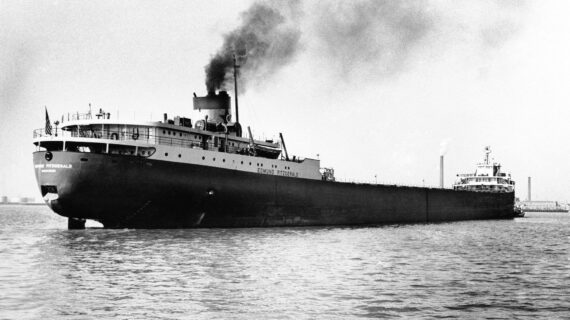
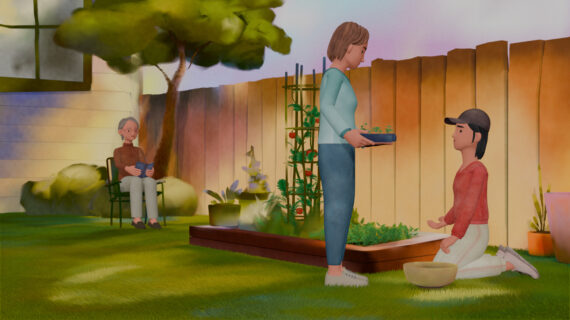




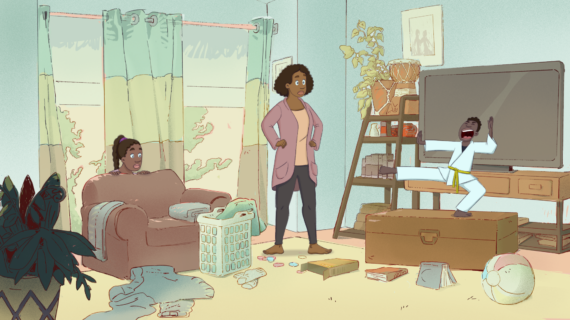
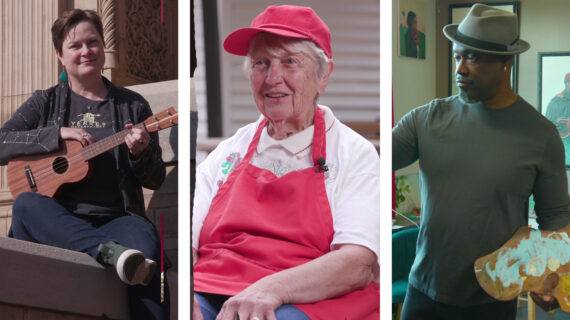
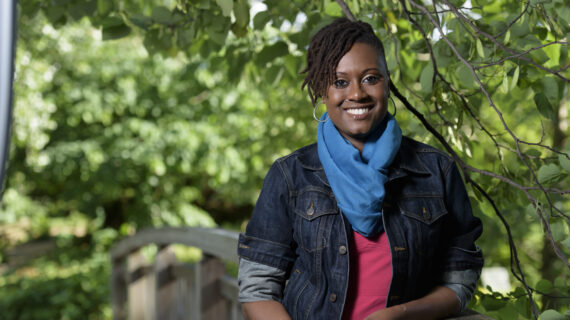

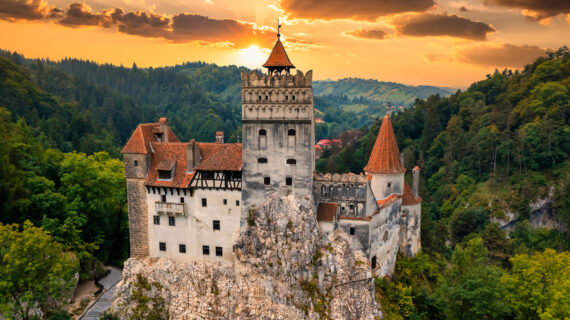

Follow Us